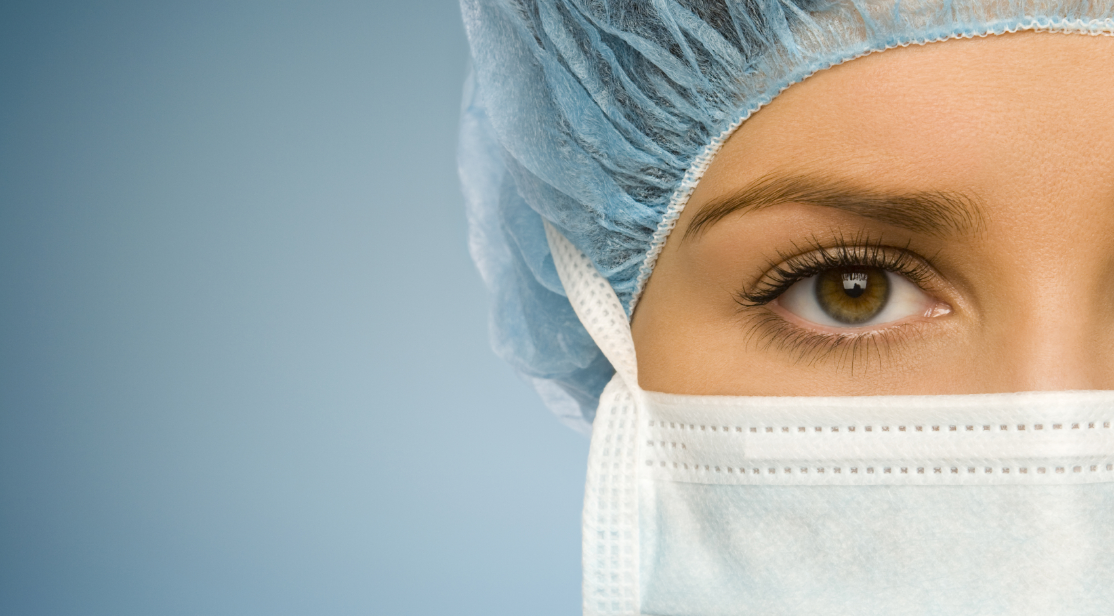Rodent Models for Oncology Research

Inotiv provides a breadth of quality oncology rodent models to customers around the world. Regardless of your location, you can explore our extensive and current database of peer-reviewed publications across major cancer cell lines to help you identify the right model for your tissue of interest and cell line. Click here to use Inotiv’s new cell line reference tool.
Do you need more information? Download our brochure on Inotiv’s rodent models for oncology below or contact us to get a quick and personal response from a customer service representative.
To access your copy of our brochure today click below:

Confidence in selecting your immunodeficient rodent models
You can trust that Inotiv’s broad rodent model portfolio will give you the precision and flexibility to achieve the potential of your research program. Inotiv offers an extensive line of nude mice, SCID mice, and nude rats. We have decades of history behind our immunodeficient rodent models so you can be confident that they have proven performance in tumor uptake and growth.
Each rodent model has been characterized in the comparative table below to help your select the most appropriate model.
Immunocompetent rodent models
Perhaps your project requires spontaneous and inducible tumor models. In addition to our extensive library of traditional rodent models, Inotiv can provide you with a full line of spontaneous and inducible tumor models, as shown below.
| Model | Nomenclature | Hair | T Cells | B Cells | NK Cells |
|---|---|---|---|---|---|
| Nude mice | |||||
| Athymic nude | Hsd:Athymic Nude-Foxn1nu | No | Nonfunctional | Functional | Functional |
| BALB/c nude (EU) | BALB/cOlaHsd-Foxn1nu | No | Nonfunctional | Functional | Functional |
| NMRI nude (EU) | HsdCpb:NMRI-Foxn1nu | No | Nonfunctional | Functional | Functional |
| SCID mice | |||||
| C.B-17 SCID | C.B-17/IcrHsd-Prkdcscid | Yes | Nonfunctional | Nonfunctional | Functional |
| C.B-17 SCID (EU) | C.B-17/IcrHan®Hsd-Prkdcscid | Yes | Nonfunctional | Nonfunctional | Functional |
| SCID/beige | C.B-17/IcrHsd-PrkdcscidLystbg-J | Yes | Nonfunctional | Nonfunctional | Impaired |
| NOD.SCID | NOD.CB17-Prkdcscid/NCrHsd | Yes | Nonfunctional | Nonfunctional | Impaired |
| B-NDG | NOD.CB17-Prkdcscid IL2rgtm1/BcgenHsd | Yes | Nonfunctional | Nonfunctional | Nonfunctional |
| B-NDG B2m | NOD.CB17-PrkdcscidIl2rgtm1 B2mtm1Fcgrttm1(B2m)/ BcgenHsd | Yes | Nonfunctional | Nonfunctional | Nonfunctional |
| B-NDG hIL15 | NOD.CB17-PrkdcscidIl2rgtm1 Il15tm1(IL15)/BcgenHsd | Yes | Nonfunctional | Nonfunctional | Nonfunctional |
| Rag mouse | |||||
| R2G2TM | B6;129-Rag2tm1FwaII2rgtm1Rsky/DwlHsd | Yes | Nonfunctional | Nonfunctional | Nonfunctional |
| Nude rat | |||||
| Athymic nude | Hsd:RH-Foxn1rnu | No | Nonfunctional | Functional | Functional |
| Model | Immune Characteristics | ||||||
|---|---|---|---|---|---|---|---|
| T Cells | B Cells | NK Cells | APC cells, complement | Additional notes on immuno-phenotype | SCID Leakiness | ||
| B-NDG | Non- functional |
Non- functional |
Non- functional |
Very low | |||
| References: Characterization in progress | |||||||
| R2G2TM | Non- functional |
Non- functional |
Non- functional |
Radioresistant | N/A | ||
| References: Characterization in progress | |||||||
| NOD.SCID | Non- functional |
Non- functional |
Impaired function | Differentiation and functional defects in APCs; absence of circulating complement | Radiosensitive (<400Gy); high incidence of lymphoma | Low | |
| References: Shultz, L.D. et al. (1995). J Immunol, 154:180-91. Prochazka et al. (1992). Proc Natl Acad SciU.S.A., 89:3290-4. Greiner, D.L. and Shultz, L.D. (1998). The use of NOD/LtSz-scid/scid mice in biomedical research. In: NOD Mice and Related Strains: Research Applications in Diabetes, AIDS, Cancer andOther Diseases. (Leiter E and Atkinson M, eds). Austin: RG Landes Company, pp 173-203. |
|||||||
| SCID-beige | Non- functional |
Non- functional |
Impaired function | Functional deficits | Lytic activity of NK cells impaired without reduced cell population or cytokine production | Low | |
| References: Mosier, D.E. et al. (1993). J Exp Med, 177:191-4. Thomsen, M. et al. (2008). Toxicol, 246:18-23. |
|||||||
| SCID | Non- functional |
Non- functional |
Functional | Normal | Leaky phenotype dependent on genetic background; Radiosensitive (<400Gy) | High (BALB/c); Moderate (C3H, ICR) | |
| References: Bosma et al. (1983). Nature, 301:527-30. Gibson, D.M. et al. (1989). Limited clonal diversity of serum immunoglobulin in leaky scid mice, pp 125-36. In: Current topics in microbiology and immunology: The scid mouse (Eds.): Bosma, M.J., Phillips, R.A., and; Schuler, M.). New York: Springer-Verlag, Bosma, G. et al. (1988). J Exp Med,167:1016-33. Poole, T.W. (1996). Lab Animal, 25:29-32. Nonoyama, S. et al. (1993).J. Immunol., 150(9):3817-24.Bosma, M.J. (1992). Immunodeficiency Reviews, 3:261-76. |
|||||||
| Nude mouse* | Non- functional |
Functional | Functional | Normal function | T cell precursors unaffected by mutation; some extrathymic functional T cells with age | N/A | |
| References: Flanagan, S.P. (1966). Genet Res, 8:295-309. Teicher, B.A. (Ed.). (2002). Tumor models in cancer research. Totowa, New Jersey: Humana Press Inc. Croy, B.A. et al. (2001). Comp Med, 51(4):300-13. Gullino, P.M. et al. (1976). Inst Lab Animal Resources News, 19:5-19. Fogh, J. and Giovanella, B. (Eds.). (1978). The Nude Mouse in Experimental and Clinical Research. New York: Academic Press. |
|||||||
| Nude rat* | Non- functional |
Functional | Functional | Normal function | N/A | ||
| References: National Research Council. (Eds.). (1989). Immunodeficient Rodents: A Guide to Their Immunobiology, Husbandry, and Use. Washington, D.C.: National Academy Press. Vos, J.G. et al. (1980). Clin immunol and Immunopathol, 15:229-37. Schuurman, H. et al. (1992). ILAR, 34:1-12. Taubman , M.A. et al.(1983). Immunol,49: 295-300. |
|||||||
| *Hairless/nude-animal does not produce full pelage. All models highly susceptible to opportunistic viral and bacterial infection. |
|||||||
| Model | Nomenclature | Research use |
|---|---|---|
| Mice | ||
| A | A/JOlaHsd | Spontaneous lung tumors |
| B6D2F1 | B6D2F1/Hsd B6D2F1/JRccHsd B6D2F1/OlaHsd |
Chemical induction of bladder tumors |
| C3H | C3H/HeNHsd | Spontaneous hepatocellular and mammary tumors |
| CBA | CBA/CaOlaHsd CBA/JCrHsd |
Susceptible to chemical induction of myeloid leukemia; hepatoma in males; mammary tumors in females |
| C57BL/6 | C57BL/6JOlaHsd C57BL/6JRccHsd C57BL/6NHsd |
Accepts murine B16F10 melanoma grafts |
| SJL | SJL/JCrHsd | High incidence of reticulum cell sarcoma (comparable to Hodgkin’s), leukemia |
| Rats | ||
| ACI (NA) | ACI/SegHsd | Spontaneous testicular and prostate cancer in aged males; females highly susceptible to estrogen-induced mammary tumors; spontaneous pituitary tumors in both sexes |
| Brown norway | BN/RijHsd | Spontaneous bladder tumors; susceptible to chemical induction of myeloid leukemia |
| Wistar furth (NA) | WF/NHsd | High incidence of spontaneous leukemia and pituitary tumors |
| Model | Nomenclature | Research use |
|---|---|---|
| Mice | ||
| BALB/c | BALB/cAnNHsd BALB/cOlaHsd |
Mammary tumors in aged mice; capable of monoclonal antibody production with injection of pristane and hybridoma cell line |
| Rats | ||
| Sprague Dawley® | Hsd:Sprague Dawley® SD® | Chemical tumor induction; carcinogenicity, toxicology; spontaneous tumors |
| Fisher 344 (NA) | F344/NHsd | Various spontaneous tumors in aged rats; carcinogenicity |

Scientific Insights
Keep up-to-date with the latest industry thinking and scientific insights
Explore Today Explore Today



